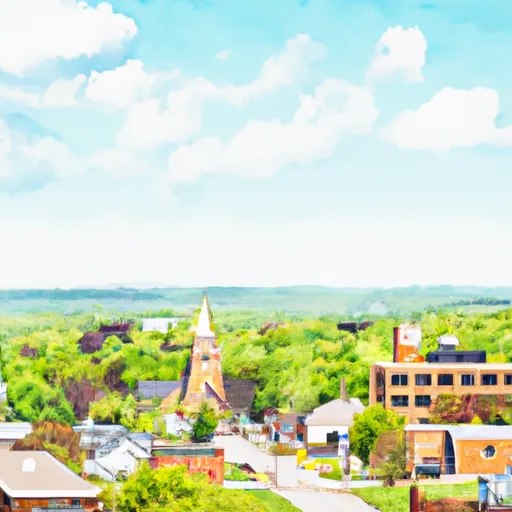-
 Snoflo Premium
Snoflo Premium
Get unlimited access to all our content
With no Ad interruptions! - Start Your Free Trial Login with existing account
Vassar
Eden Index
Climate
7.4
•
Recreation
4.1
•
Community
2.2
•
Safeguard
4.9/10

Vassar, Michigan is a charming small town located in Tuscola County. Situated in the eastern part of the state, Vassar experiences a humid continental climate characterized by four distinct seasons. Summers are warm with average temperatures ranging from the mid-70s to low 80s Fahrenheit, while winters are cold and snowy, with temperatures usually hovering around the freezing point.
When it comes to hydrology constituents, Vassar is surrounded by numerous lakes and rivers. The Cass River flows through the town, providing opportunities for water-based activities like fishing, canoeing, and kayaking. Additionally, nearby Holloway Reservoir offers boating and swimming opportunities.
Outdoor enthusiasts will find plenty of recreational activities to enjoy in Vassar. The town is home to multiple parks and trails, including the popular Vassar Rail Trail, which provides a scenic route for walking, jogging, and biking. Residents and visitors can also explore the nearby state forests and conservation areas, such as the Tuscola State Game Area, where hunting, hiking, and wildlife observation are popular activities.
Overall, Vassar, Michigan offers a diverse climate, abundant hydrology constituents, and various outdoor recreation opportunities, making it an appealing destination for nature lovers and adventure seekers.
What is the Eden Index?
The Snoflo Eden Index serves as a comprehensive rating system for regions, evaluating their desirability through a holistic assessment of climate health, outdoor recreation opportunities, and natural disaster risk, acknowledging the profound impact of these factors on livability and well-being.
Climate Health Indicator (CHI): 7.4
Vassar receives approximately
823mm of rain per year,
with humidity levels near 82%
and air temperatures averaging around
9°C.
Vassar has a plant hardyness factor of
6, meaning
plants and agriculture in this region thrive during a short period during spring and early summer. Most
plants will die off during the colder winter months.
By considering the ideal temperature range, reliable water supplies, clean air, and stable seasonal rain or snowpacks, the Climate Health Indicator (CHI) underscores the significance of a healthy climate as the foundation for quality living.
A healthy climate is paramount for ensuring a high quality of life and livability in a region, fostering both physical well-being and environmental harmony. This can be characterized by ideal temperatures, reliable access to water supplies, clean air, and consistent seasonal rain or snowpacks.
Weather Forecast
Streamflow Conditions
Saginaw
Area Rivers
Saginaw
Snowpack Depths
Saginaw
Reservoir Storage Capacity
Saginaw
Groundwater Levels
Recreational Opportunity Index (ROI): 4.1
The Recreational Opportunity Index (ROI) recognizes the value of outdoor recreational options, such as parks, hiking trails, camping sites, and fishing spots, while acknowledging that climate plays a pivotal role in ensuring the comfort and consistency of these experiences.
Access to outdoor recreational opportunities, encompassing activities such as parks, hiking, camping, and fishing, is crucial for overall well-being, and the climate plays a pivotal role in enabling and enhancing these experiences, ensuring that individuals can engage in nature-based activities comfortably and consistently.
Camping Areas
| Campground | Campsites | Reservations | Toilets | Showers | Elevation |
|---|---|---|---|---|---|
| Camp Dearborn | 191 | 934 ft | |||
| Wayne County Fairgrounds RV | None | 691 ft | |||
| Wolverine | 190 | 767 ft | |||
| Proud Lake State Rec Area | 130 | 1,002 ft | |||
| Seven Lakes State Park | 75 | 959 ft | |||
| Pontiac Lake State Rec Area | 175 | 1,015 ft | |||
| Highland State Rec Area | 40 | 977 ft | |||
| Ortonville State Rec Area | 25 | 1,073 ft | |||
| Holly State Rec Area | 160 | 1,026 ft | |||
| Groveland Oaks County Park | None | 963 ft |
Nearby Ski Areas
Catastrophe Safeguard Index (CSI):
The Catastrophe Safeguard Index (CSI) recognizes that natural disaster risk, encompassing floods, fires, hurricanes, and tornadoes, can drastically affect safety and the overall appeal of an area.
The level of natural disaster risk in a region significantly affects safety and the overall livability, with climate change amplifying these risks by potentially increasing the frequency and intensity of events like floods, fires, hurricanes, and tornadoes, thereby posing substantial challenges to community resilience and well-being.
Community Resilience Indicator (CRI): 2.2
The Community Resilience Indicator (CRI) recognizes that education, healthcare, and socioeconomics are crucial to the well-being of a region. The CRI acknowledges the profound impact of these elements on residents' overall quality of life. By evaluating educational resources, healthcare accessibility, and economic inclusivity, the index captures the essential aspects that contribute to a thriving community, fostering resident satisfaction, equity, and social cohesion.

